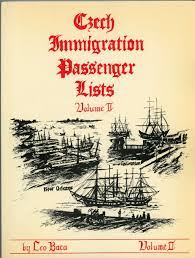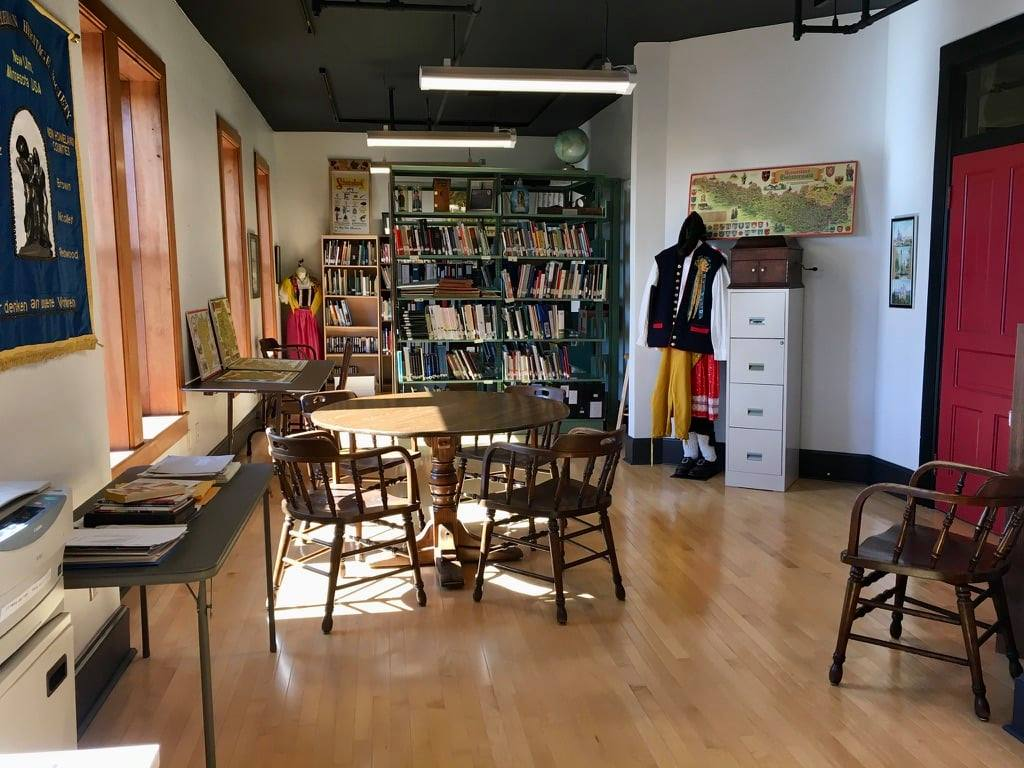In October of 2013 we attended the Czechoslovak Genealogical Society International Conference in Lombard, Illinois.
This conference appeared on our radar while looking for anything that might inform us on my Bohemian ancestry. If it didn't help in understanding the Kunshier's world, it looked like an opportunity to learn some genealogical techniques from some skilled amateurs and professionals.
An additional prompt was finding Rosemary Ruffenach's article about her Grandmother's Fur Coat in the March 3, 2011 Twin Cities Daily Planet.
Rosemary writes: "the coat would have graced Grandma's shoulders during Mass at St. Bernard's Church in Saint Paul's North End community (home to Austro-Hungarians and Bohemians), and to meetings at the St. Bernard's Little Flower Mission Club, as well as visits to her extended family scattered throughout the North End....
Many of my maternal family members attended St. Bernards and grew up in the same neighborhood that Rosemary mentions in the article. It was the church of my mother and her family. My parents were married in the rectory by the parish priest.
We filled out membership forms on-line, paid our conference fees, and bright and early on a Thursday morning were on our way to the Westin Hotel in Lombard, Illinois. Never having been to Lombard, but confident we would get there eventually, we wandered on. In hindsight, this was not the smartest approach, but we did manage, after a couple of gas station and fast food location inquiries to pull up to the Postmodern shopping center that harbored the Westin Hotel.
"Before you can begin your search in the archives of the Czech Republic, it's necessary to have, at the very least, the name of your Czech ancestor and the name of the village where they lived prior to emigrating." ... cautions from the Czech Archives
Well, we had some names but didn't have the village. We had great grandparents identified as Bohemian in the 1910 Federal Census. We were hoping, by some miracle, to discover their village during the course of a presentation or from a crucial clue provided by a fellow participant between bites of the luncheon chicken salad sandwich.
We had arranged for cat feeding and a place to stay. The first was provided by friend Jim Lookabaugh and daughters. The later was provided by Shan's daughter Monica and husband Mike at their home in Wilmette. Entertainment and drama was provided by their daughter Teagen and Stewart the cat and Madison the dog.
Shan had posted this query to the C.G.S.I. member's web board. "Wasshobon, Where is it? The last name is Kunshier, Joseph and wife, Marie Katherine (nee Teller.) Neither Joseph Sr. or his son, Joseph Jr. identify their home village on their Declarations of Intent to become U. S. citizens. Of the other two sons born in Bohemia, one does not apply and dies as a young adult, leaving the third son, Charles who gives his place of birth as Wasshobon, Austria on his Declaration of Intent.
Previous to our trip, Shan spent some time at the State Historical Society of Wisconsin looking through the Leo Baca indices for Kunshier embarkation logs.
She did find that Josef (Joseph) Kunscher (Kunshier) embarked on the German Lloyd ship "Nurnberg", from Bremen, in September of 1884. He landed in Baltimore with Josef Jr., age 15, and Michel, age 13, on October 15. Left behind, to come later, were Marie (Mary) and the other 3 children. (On one of the census, Maria gives her arrival date as a year later than Joseph's).
The first conference session that I attended was Documenting Czech Immigrant Arrivals by Leo Baca. Leo is a Czech Texan whose primary interest in documenting the arrival of Czech immigrants to America.
He has conducted Czech genealogical research for more than 30 years and has published the nine-volume Czech Immigration Passenger Lists series. His session included information about ship passenger lists, Internet sources, and his publications.
The 2nd session I attended was Homes of Our Czech Ancestors in the Old Fatherland by Miroslav Koudelka. Miroslav has been a professional genealogist since 1993. He also serves as a guide in the Czech Republic, and interpreter. He translated into English the History of Czechs in America by
Dr. Jan Habenicht.
Shan attended two sessions with Czech genealogist Jan Dus.
The Czech Republic has great records for the Catholic Church, census, land ownership, and European based genealogy. Many of the records have been digitized.
Shan Thomas consulting on the Kunshiers with Pam Peltier.
The conference also provided scheduled time to use the CGSI traveling library and a private consultation with a trained volunteer genealogist. Pam Peltier helped with our search and, while she tried every thing she could think of, we were still left scratching our heads about the name of the village.
One of the books we searched in the volumes brought to Lombard was the Berni Rula, a 1654 Bohemian civil census. Land owners names and property are recorded and published by area of the country. The two volume alphabetical name index lists name of taxpayer, how many fields owned, listing of livestock, social position, etc.
We didn't find Kunshiers in this census, but did find two families of Streckers, Caspar and George. In our family tree, Emma Kunshier, a sibling of Grandma Rose Kunshier married George Strecker and the Kunshiers and Streckers continued as neighbors in Anoka County. Maybe a connection, maybe not.
The complete Czechoslovak Genealogical Society International Library is housed within the Minnesota Genealogical Society (MGS) Library in St. Paul, Minnesota and perhaps worth a look during a future trip. [directions and more info here]
All of this was helpful for a broader context but not specific enough for our search. We came to the conclusion that the ancestors we were looking for were probably German speaking Bohemians who had come from the border districts of Bohemia. This area is also referenced after the First World War as The Sudetenland. Today it is part of the Czech Republic
 |
| Wade Olsen |
The conference presenter person who seemed most informed about the German-Bohemians was Wade Olsen. He has focused much of his research and time on the central European region including the western Czech Republic and eastern Bavaria. I attended both of his sessions on German-Bohemian Immigrants and their culture.
Wade now lives New Ulm, Minnesota where many of the German-Bohemians settled. He is the current editor of the German-Bohemian Heritage Societies newsletter. New Ulm is also the headquarters of the German-Bohemian Society and home to their library and research facility.
A few years ago during a trip to the Minnesota History Center in St. Paul, we had purchased the book, German Bohemians; The Quiet Immigration. It was written by Laven J. Rippley with much of the research information, and many photographs provided by Robert Paulson.
Both Shan and I gave it a cursory look at the time but because it was so focused on the New Ulm community, we put it into the "to be read later" pile. Now is the time to give it a 2nd look.
"The German Bohemians almost became a lost people. It is extremely difficult to track their life in America. Few archives recognize the existence of the German-Bohemians as a distinct cultural group. Usually they are lumped together with other nationalities. Some census-takers listed them as Austrian, since their homeland was under the rule of the Austrian Empire when they immigrated. Some were labeled as German because of the language they spoke. Still others were called Bohemians, a term which hardly distinguished them from their Czech neighbors. In fact, in the 1905 Minnesota census, Brown County, the home of the most German Bohemians in Minnesota, was noted to have the second-largest Czech population in the state, when in fact there were only two Czech speaking families in the County. Not until the 1920s census were the Bohmish listed as German speakers from Bohemia." ... Robert Paulson “German-Bohemian Immigration to North America” Selected Papers from the 2003 SVU North American Conference, Cedar Rapids, Iowa, 26-28 June 2003
After the conference, Shan scrolled for hours through the embarkation records from Hamburg and the Baltimore debarkation records for the years 1884-1886. The hope was to find additional Kunshiers on the ship manifests.
Going forward, there is still hope that we can recover some information about Kunshiers in the Minnesota Roman Catholic Archdiocese records. The two locations would be at St. Agnes in St. Paul or at St. Peters in Forest Lake. We have gathered names of possible living Kunshiers from obituaries, Ancestry.com listings, and the white pages of telephone directories in Minnesota and Wisconsin. We formulated a letter to send to any Kunshiers that may help in the quest.
The conference was very encouraging. If we can find the Bohemian home village, we may have a wealth of information waiting for us in the Czech Republic. We have since found the village name to be:Neubauhutten, Wassersuppen, Bohemia









Gerry,
ReplyDeleteNice article . . . gives the reader a sense of the trials and tribulations one encounters in the quest for a families past.